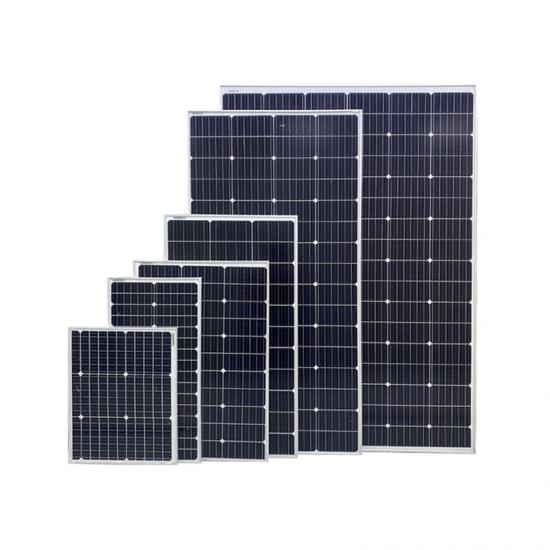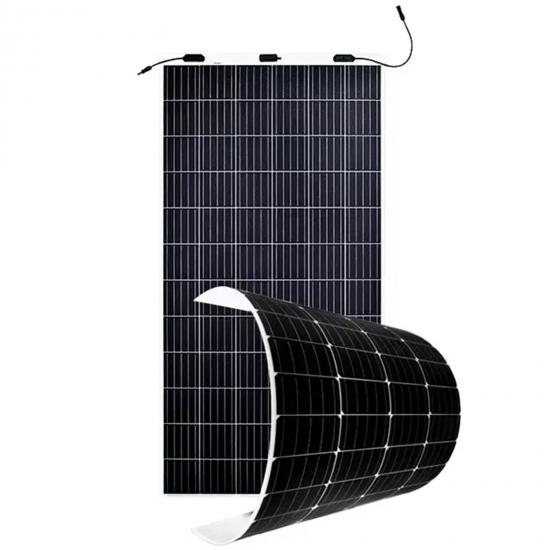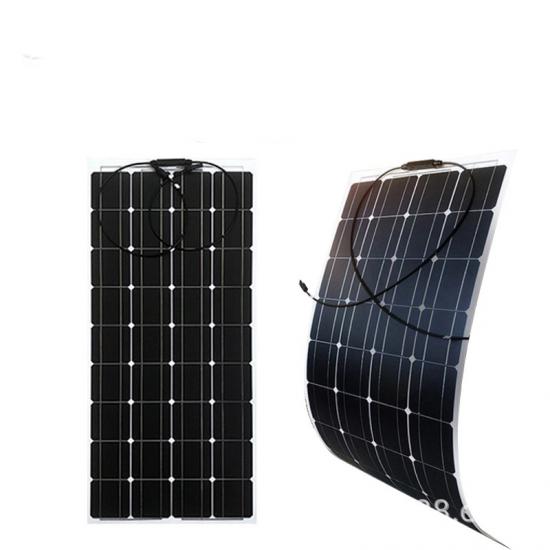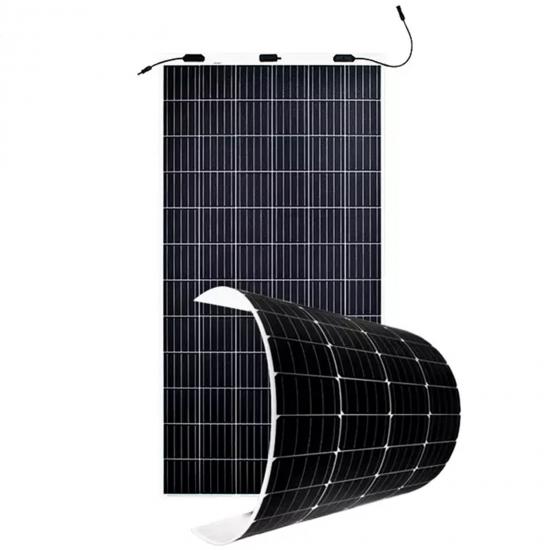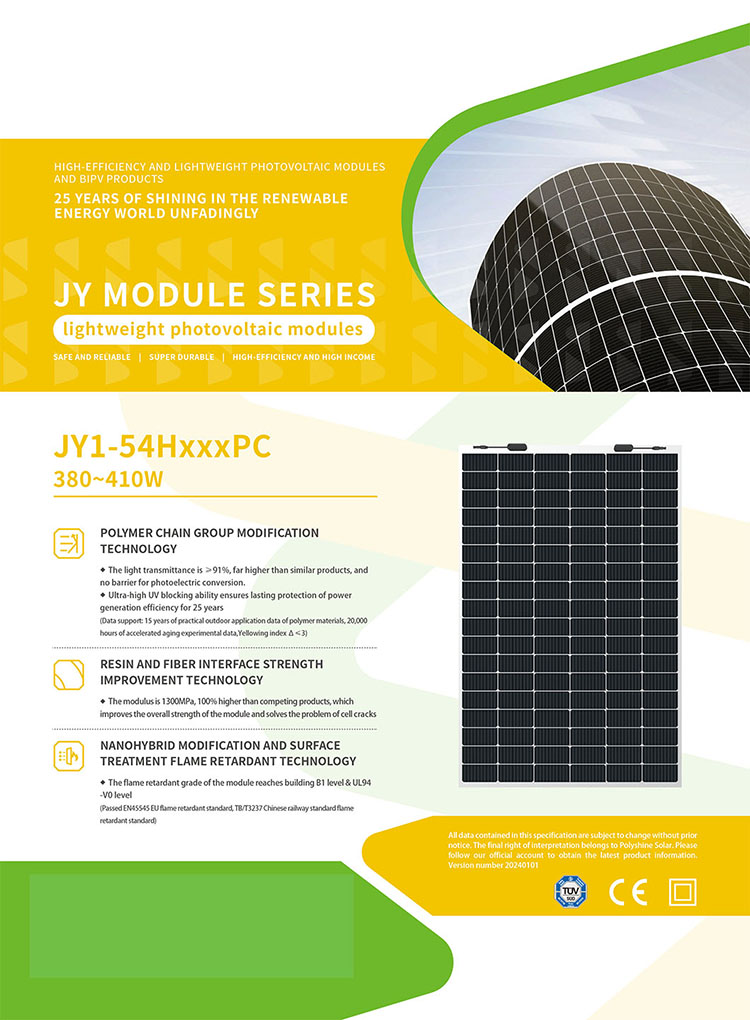
PARAMETER
|
TYPICAL ELECTRICAL CHARACTERISTICS |
|||||||||
|
AT STANDARD TEST CONDITIONS(STC) |
STC:AM=1.5,irradiance1000W/m²,Component temperature25ºC |
||||||||
|
Typical Type |
Unit |
JY1-54H380PC |
JY1-54H385PC |
JY1-54H390PC |
JY1-54H395PC |
JY1-54H400PC |
JY1-54H405PC |
JY1-54H410PC |
|
|
Max-Power(Pm) |
W |
380 |
385 |
390 |
395 |
400 |
405 |
410 |
|
|
Power Tolerance |
W |
|
|
|
0~+5W |
|
|
|
|
|
Max-Operating Voltage(Vm) |
V |
30.23 |
30.38 |
30.54 |
30.69 |
30.85 |
31.02 |
31.18 |
|
|
Max-Operating Current(Im) |
A |
12.59 |
12.69 |
12.79 |
12.89 |
12.99 |
13.08 |
13.17 |
|
|
OpenCircuitVoltage(Voc) |
V |
36.00 |
36.20 |
36.40 |
36.60 |
36.80 |
37.00 |
37.20 |
|
|
Short Circuit Current(isc) |
A |
13.42 |
13.49 |
13.56 |
13.63 |
13.70 |
13.76 |
13.82 |
|
|
Module Efficiency(nm) |
% |
19.2 |
19.5 |
19.7 |
20.0 |
20.2 |
20.5 |
20.7 |
|
|
ELECTRICAL CHARACTERISTICS AT NOMINAL MODULE |
NMOT:irradiance 800W/m,ambient temperature20ºC,wind speed1m/s |
||||||||
|
Typical Type |
Unit |
JY1-54H380PC |
JY1-54H385PC |
JY1-54H390PC |
JY1-54H395PC |
JY1-54H400PC |
JY1-54H405PC |
JY1-54H410PC |
|
|
Max-Power(Pm) |
W |
286 |
290 |
294 |
298 |
302 |
306 |
310 |
|
|
Max-Operating Voltage(Vm) |
V |
28.09 |
28.24 |
28.42 |
28.55 |
28.70 |
28.85 |
29.00 |
|
|
Max-Operating Current(m) |
A |
10.21 |
10.30 |
10.39 |
10.47 |
10.55 |
10.62 |
10.71 |
|
|
Open-Circuitvoltage(Voc) |
V |
33.80 |
34.00 |
34.20 |
34.40 |
34.60 |
34.80 |
35.00 |
|
|
Short-circuit current (Isc) |
A |
10.70 |
10.77 |
10.85 |
10.90 |
10.96 |
11.01 |
11.08 |
|
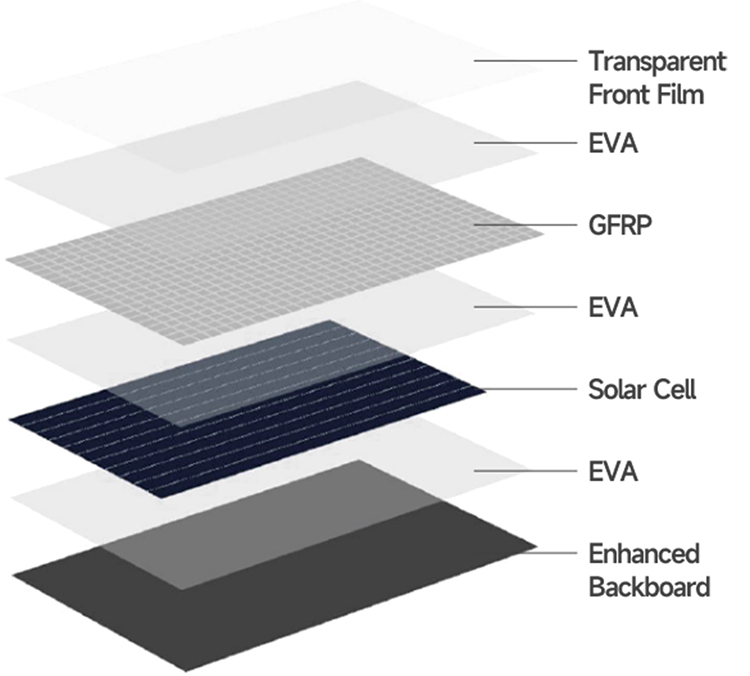
ADVANTAGE
Traditional modules cannot meet the needs of modern photovoltaic integrated buildings in terms of lightweight, flexibility, functional integration, and overall performance.
·Limited Load heavyweight, bracket installation, high roof load requirements
·Safety Risk risk of self-explosion (3‰ )
·Additional costs steel structure/bracket costs, labor costs due to complex construction
·Insufficient Shock Resistance the glass module is fragile and has poor shock resistance
·Aesthetic Shortcomings single color, single shape, poor adaptability
·LIGHTEROnly 30% of the weight of traditional modules, solving the problem of insufficient load on existing roofs
·MORE FLEXIBLEIt can be better integrated into architectural design, provide more diverse appearance and integration solutions, and adapt to different curved surfaces and shapes, so that photovoltaic systems can be perfectly integrated with buildings and reduce design restrictions.
·SHINING GREEN ENERGY WORLD Through the research and technological iteration of encapsulation materials, we have solved the insufficient light transmission and weather resistance of other ordinary lightweight modules and achieved higher and more stable power generation efficiency.
Flexible solar panels differ quite from rigid, rectangular, glass-encased standard solar panels typically found on rooftops. Rather, flexible solar panels come in all shapes and sizes and are expected to be used in a greater number of situations than standard panels Whereas portable solar panels contain solar cells mounted in a lightweight, often plastic frame and thin-film panels are made of materials like copper, selenium, and gallium, flexible and standard solar panels use solar wafers to convert sunlight to electricity. Most often, flexible panels use wafers made from silicon, though they are far thinner than those in standard panels-as thin as merely a few micrometers in width. Whereas standard panels are sandwiched between layers of glass, flexible panels are placed between layers of protective plastic.
Flexible solar panels differ quite from rigid, rectangular, glass-encased standard solar panels typically found on rooftops. Rather, flexible solar panels come in all shapes and sizes and are expected to be used in a greater number of situations than standard panels Whereas portable solar panels contain solar cells mounted in a lightweight, often plastic frame and thin-film panels are made of materials like copper, selenium, and gallium, flexible and standard solar panels use solar wafers to convert sunlight to electricity. Most often, flexible panels use wafers made from silicon, though they are far thinner than those in standard panels-as thin as merely a few micrometers in width. Whereas standard panels are sandwiched between layers of glass, flexible panels are placed between layers of protective plastic.
LV-BAT-R5.12Aa is a lithium battery with an operating voltage range between 45.6~56.2V. It is designed for residential energy storage applications and works together with a low voltage hybrid inverter.LV-BAT-R5.12Aa is not suitable for supporting life-sustaining medical devices. LLV-BAT-R5.12Aa ihas built-in BMS (Battery Management System), which can manage and monitor cells information including voltage, current and temperature. Besides that,BMS can balance cells charging to extend cycle life.BMS has protection functions including over-discharge,over-charge, over-current and high/low temperature;the system can automatically manage charge state, discharge state, and balance state. Multiple LWBAT-R512Aacan be connected parallel to expand capacity and power 15 LV-BAT-R5.12Aa can be connected in parallel at most
The MPPT solar charge controller uses multiphase synchronous rectification technology and common negative pole design, it chooses high speed processor and advanced MPPT algorithm to make it has high response speed, high reliability and other standards. The advanced MPPT algorithm that the solar controller adopts can trace the maximum power point of PV arrays quickly in any situation to obtain the max. power from PV arrays. And the multiphase synchronous rectification technology can achieve high conversion efficiency in any charging environment and improve the utilization rate of solar power system greatly. According to the rated voltage of battery bank system, our factory can provide the MPPT solar charge controller from 192V to 540V which suitable to almost off grid solar power system
In recent years, photovoltaic power generation technology has advanced rapidly, and the installed capacity has increased rapidly. However, photovoltaic power generation has shortcomings such as intermittent and uncontrollable. Before processing, large-scale direct access to the power grid will bring great impact and affect the stable operation of the power grid. Adding the energy storage can make the photovoltaic power generation smoothly and stably output to the power grid, and the large-scale access to the power grid will not affect the stability of the power grid. And photovoltaic + energy storage, the system has a wider range of applications.
The 60kw off grid solar system is suitable for area without grid or grid is not stable. It can be compatible with generator or grid. Inverter power: 60kw power frequency inverter AC output voltage: AC120V/240V split phase or three phase 208V/380V Battery voltage: DC360V Battery type: Gel battery or LiFePO4 battery Solar panel type: Mono or poly
Flexible solar panels differ quite from rigid, rectangular, glass-encased standard solar panels typically found on rooftops. Rather, flexible solar panels come in all shapes and sizes and are expected to be used in a greater number of situations than standard panels Whereas portable solar panels contain solar cells mounted in a lightweight, often plastic frame and thin-film panels are made of materials like copper, selenium, and gallium, flexible and standard solar panels use solar wafers to convert sunlight to electricity. Most often, flexible panels use wafers made from silicon, though they are far thinner than those in standard panels-as thin as merely a few micrometers in width. Whereas standard panels are sandwiched between layers of glass, flexible panels are placed between layers of protective plastic.
What is off grid system? Off-grid solar energy systems are also called stand-alone solar systems. It does not connect with Grid or called Utility. It is very popular and suitable for remote areas where there is no public power or Public power is instable.It can be for Home applications, Commercial applications and Industrial applications. The off-grid solar energy system can be 1kW/2kW/3kW/5kW/10kW/12kW/16kW/20kW/24kW/30kW/50kW/80kW/100kW/120kW/150kW/200kW/ Customized off-gid power system Off-grid system is suitable for areas without grid-connected or unstable grid-connected power. Off grid system is usually composed of solar panels, connector, inverter, batteries and mounting system. Description of 10kW solar panel system: Inverter power: 10kW AC output voltage: AC110V/120V Battery voltage: DC24V or DC48V Battery type: Gel battery or LiFePO4 battery Solar panel type: Mono or poly Compatible with grid and generator Monitor: WIFI or GPRS


 IPv6 network supported
IPv6 network supported






